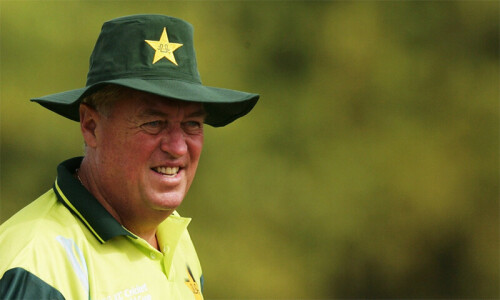NOVEMBER-December is the gloomiest period of the year in Paris. Dark clouds hang low and even when they’re not dripping you are uncomfortably aware of freezing humidity sticking to your face, neck and hands. On the rare days when it dares to rise, a shivering sun timidly follows a low trajectory behind the buildings and sets into the horizon by afternoon tea time.
Count André de la Roche, who spends his summer and early autumn months working outdoors, happy as a lark, on his Loire Valley vineyards refuses to give up to sullenness and his apartment facing the Eiffel Tower is normally sprightly and full of friends heatedly discussing one thing or the other.
The subject this evening is the sale of a triptych portrait of Lucian Freud by Francis Bacon at Christie’s auction house in New York for 142.4 million dollars, turning it overnight into the most expensive work of art in the world, so far.
Jean Lauvergeat, a journalist who works for Loire Valley daily, says he fails to understand why a painting, unknown until only yesterday, all of a sudden becomes worth hundreds of millions. “Or maybe a man who lives in the countryside and spends his time covering local events is too stupid to grasp the secrets of high finance,” he sighs.
“You’re not stupid and you know it,” says André de la Roche, not turning back from his task of feeding new logs to the fire, his golden Labrador Schweppes by his side, keenly watching every movement by his master.
“So many people, intelligent people in every way,” he continues, finally coming back to his easy chair, settling down and lighting his pipe, “do not understand this phenomenon because they are unable to dissociate their appreciation of art from the world of moneymaking.
“Take Paul Gauguin’s portrait of Van Gogh painting sunflowers for example, or Henri Toulouse-Lautrec’s two studies of the laundry lady, or any other classical portrait by a great painter. Just compare them with Bacon’s work. Or for that matter try to find the artistic merit you’re looking for in Jeff Koon’s sculpture ‘Balloon Dog’ sold in the same auction for 58.4 million dollars or in Andy Warhol’s painting of a Coca-Cola bottle (57.2 million dollars).
CRAFTY MANIPULATION
“Your head will keep on spinning as long as you are unable to swallow the fact that capitalism American style has nothing to do with artistic vision. You are not acquiring these works for your aesthetic pleasure; you’re only investing in a crafty but intricate commercial manipulation.
“Match this with a normal business operation like import & export or owning an apartment building or running a factory. You need staff whom you pay salaries and then there is a whole range of taxes to pay to the government.
“But your acquisition of a work of art is a different kind of investment. You’re paying no salaries, no taxes, no wear-and-tear, and if your agents are smart, with the right kind of publicity your investment can double or triple in a few months’ time.
“That evening we are talking about, Christie’s sold some sixty pieces, earning 691.5 million dollars in less than two hours. Bacon’s triple portrait of Lucian Freud, who was himself a painter and the grandson of Sigmund Freud, broke the record set only a year ago, also in New York (where else?) by the rival auction firm Sotheby’s who was paid 119.9 million dollars for ‘The Cry’, the famous painting by the Norwegian artist Edvard Munch.
“A poor fourth, if one may qualify it as such, during that sensational auction, was Mark Rothko’s painting simply called ‘Orange’. This is not an unjust title given the fact that there is nothing else on the canvas but a thick layer of orange paint. It was sold for 46 million dollars.
“But we’re not done yet. Allow me to add that N°5 on this list of pathetic left-behinds is a painting by Christopher Wool called ‘Apocalypse Now’. It’s actually a poster that says, all in capital letters “SELL THE HOUSE/ SELL THE CAR/ SELL THE KIDS.” It brought 26.4 million dollars.
“When you think of Paul Gauguin and Vincent Van Gogh, who both died in misery without ever being able to sell their works!”
Count André de la Roche gives a hard tap to his pipe; apparently he has smoked his tobacco to the end. Jean Lauvergeat appears satisfied with his explanation. Schweppes looks at our faces in turns, gives out a bored yawn then flattens his chin in front of the fireplace and closes his eyes. His gesture apparently means: “Why does it take you humans, hours to understand something as elementary as that?”
The writer is a journalist based in Paris. ZafMasud@gmail.com














































Dear visitor, the comments section is undergoing an overhaul and will return soon.